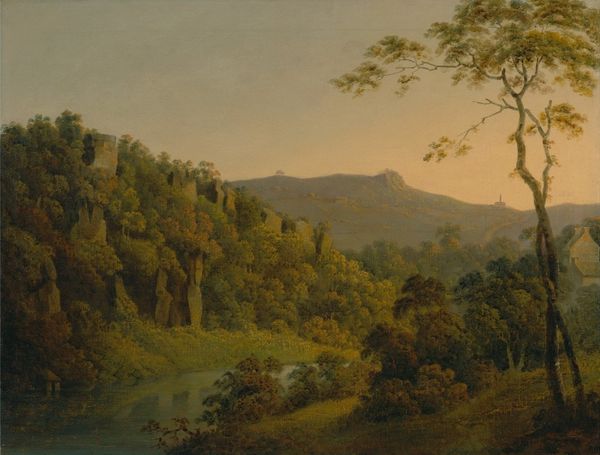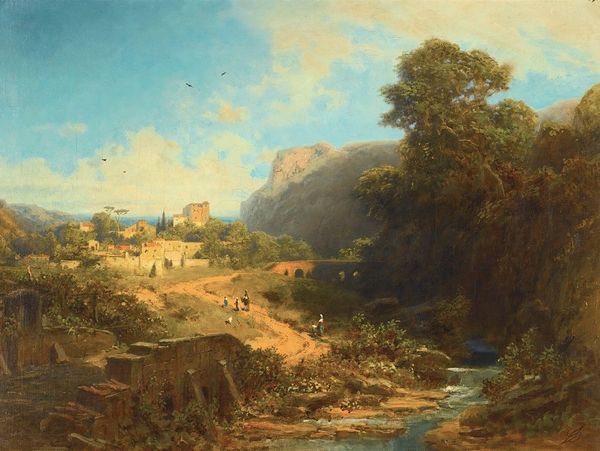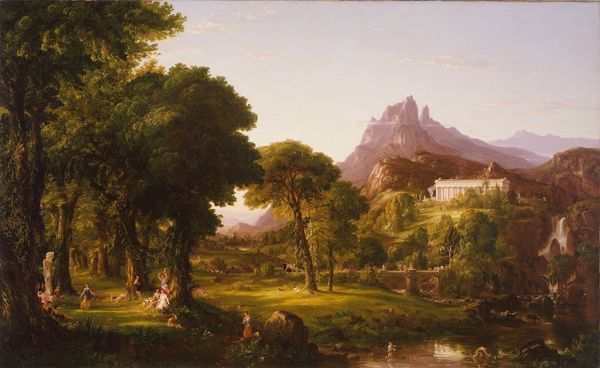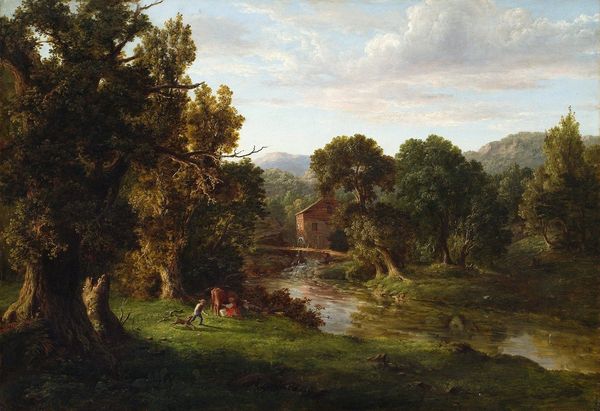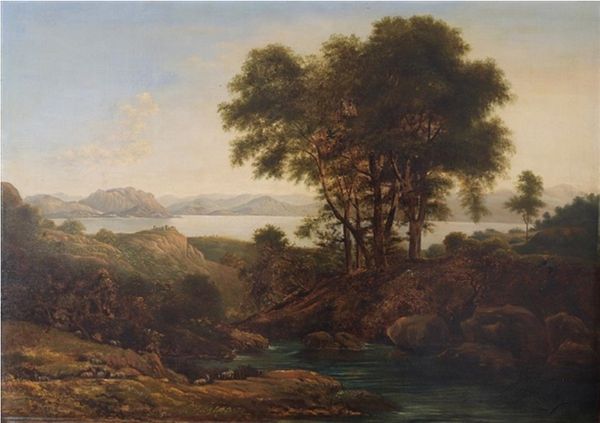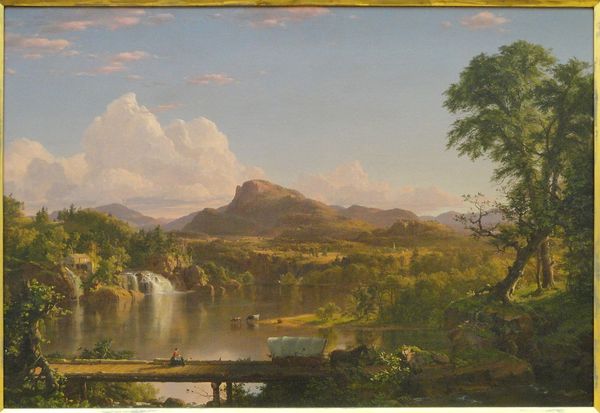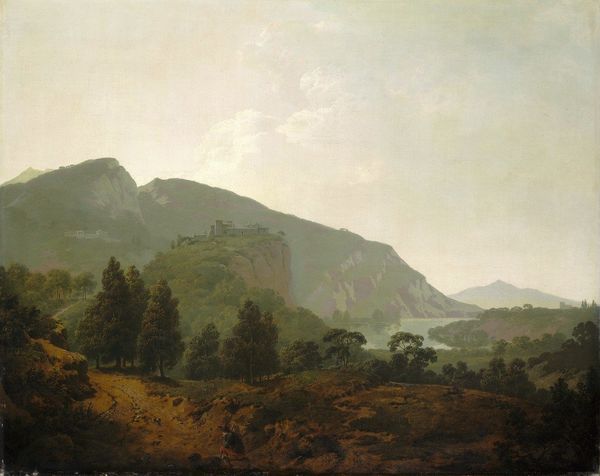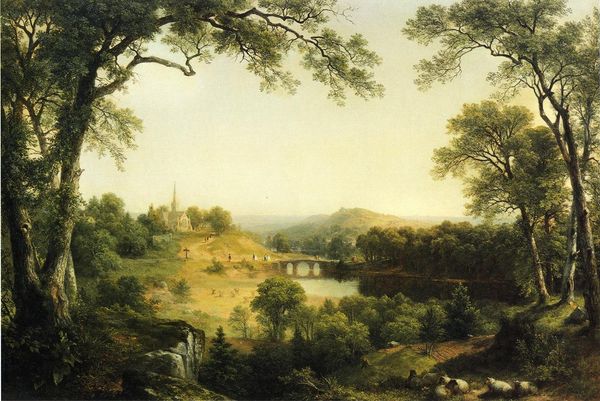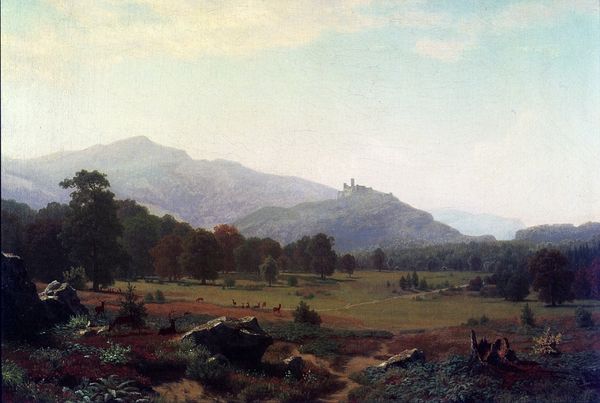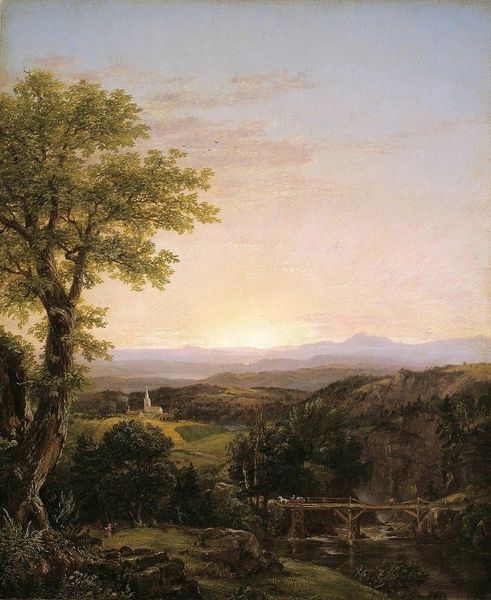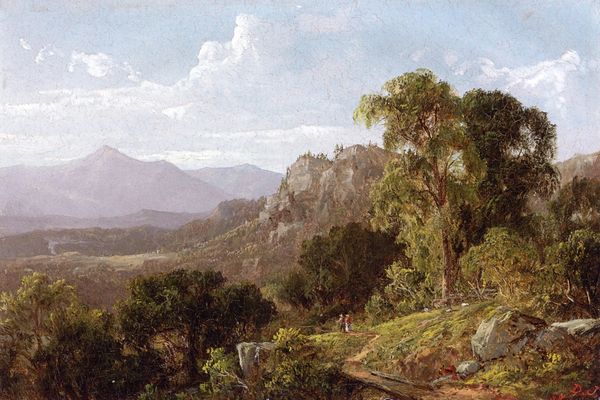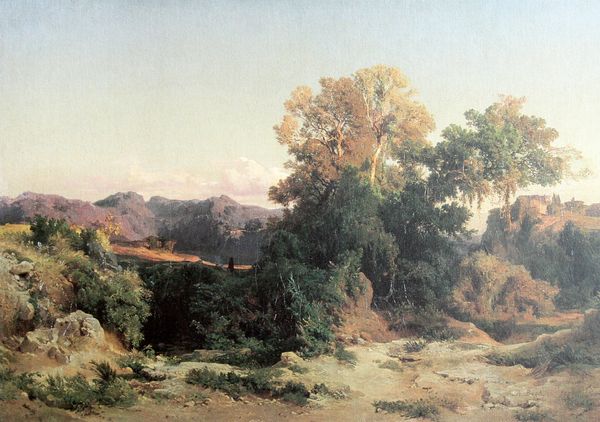
painting, oil-paint
#
painting
#
oil-paint
#
landscape
#
nature
#
oil painting
#
romanticism
#
hudson-river-school
#
cityscape
#
nature
#
realism
Copyright: Public Domain: Artvee
Curator: Standing before us is Thomas Cole’s “Catskill Scenery,” created around 1833. It’s a masterful example of oil paint on canvas, characteristic of the Hudson River School. Editor: It's breathtaking. The layering creates such depth. I immediately get a sense of peace—a kind of idealized nature. Is that intentional, do you think? Curator: Undoubtedly. Cole and the Hudson River School were deeply invested in the symbolic weight of the American landscape. They saw it as embodying a unique national identity and divine presence. Notice how the wild, untamed elements are balanced by signs of human presence, a subtle farmstead by the river. Editor: Yes, the visual syntax presents us with this clear foreground, the rugged pathway, drawing us into the softer, almost picturesque midground and finally the hazy, almost ethereal background. What about that figure on the path, so small in scale compared to everything else? Curator: The lone figure serves as a traditional Rückenfigur, inviting us into the scene and prompting contemplation. I read them as a representation of humankind's harmonious, yet diminutive, relationship with nature—a popular theme during the Romantic era. They are strolling out of darkness, so to speak, towards an almost enlightened vista. Editor: The formal structure works with this thematic interpretation so well. Cole creates contrast in color too: earthy browns and greens that graduate into paler blues. It’s incredibly serene and invites meditative reflection. You could spend ages decoding all the interrelationships in terms of shape, light, and even paint application. Curator: Absolutely. The scene presents both literal landscape and psychological landscape—inviting the viewer to feel at one with this visual harmony. For the artists of his time, these representations promoted a certain set of beliefs. What are we to make of the encroachment on such nature, for example? Is it a subtle critique? Editor: The texture almost convinces us the mountains were carved this way just to pose some interesting problems regarding visual harmony, contrast, unity and other abstract notions—Cole presents the land almost like a classical tableau—we are both in and out of time. I leave it still, as much now, as an object of beauty as I leave it as something beyond formal analysis. Curator: Quite a statement of the staying power of symbolism within nature’s visual vocabulary, all those years later!
Comments
No comments
Be the first to comment and join the conversation on the ultimate creative platform.
